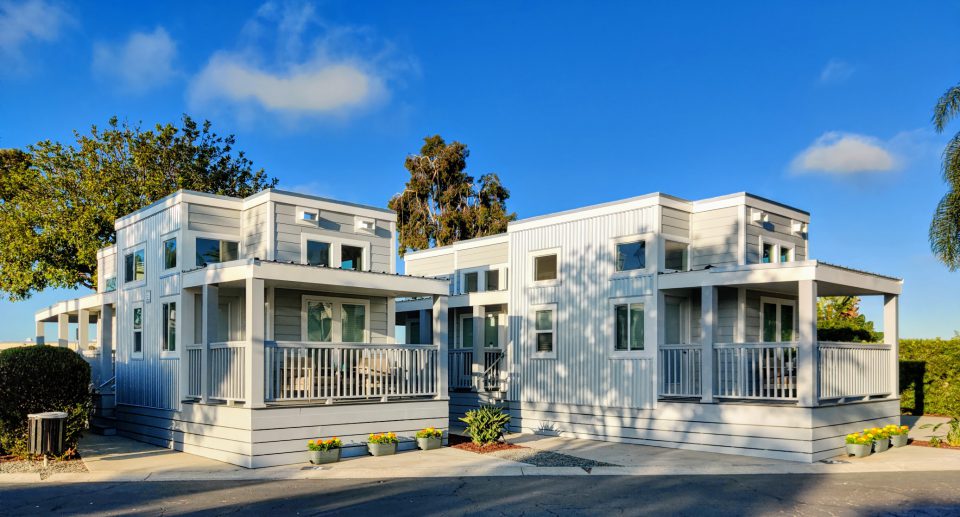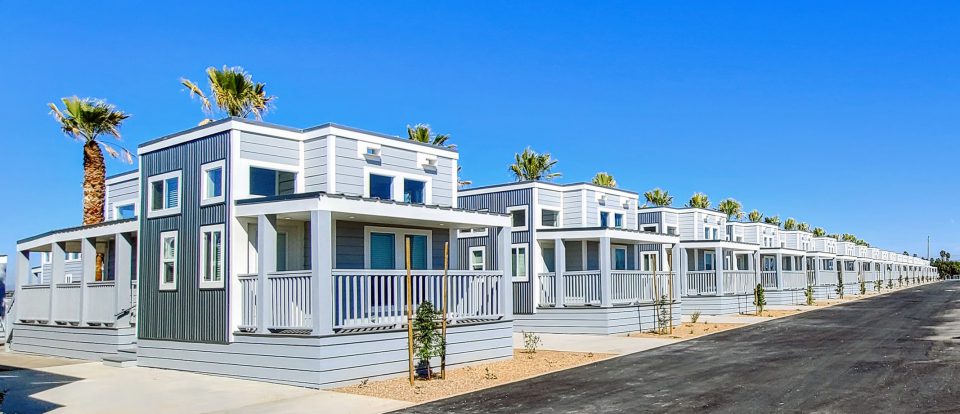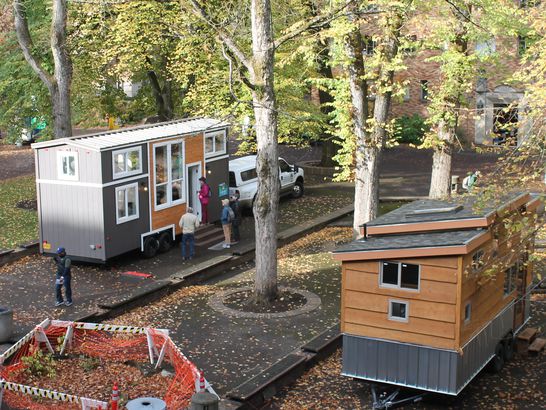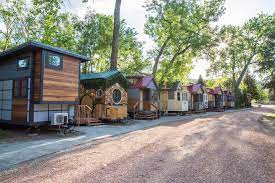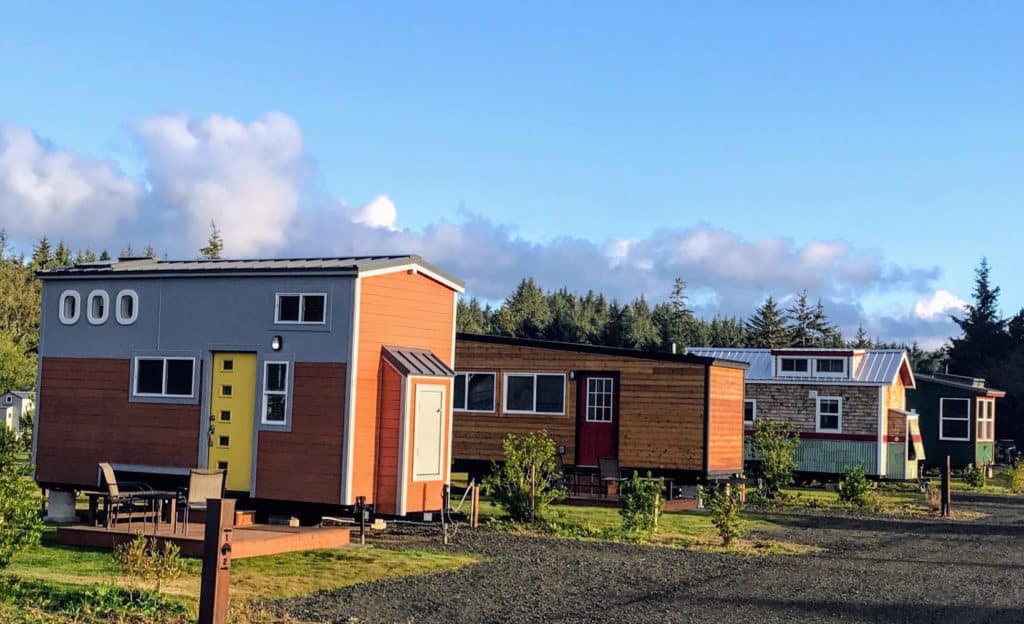What is A Tiny House
When most people use the term tiny house, they are often referring to a home built using conventional methods but on the scale of an RV travel trailer. These homes are often built on flatbed trailers and are owner-built. These homes are often built on flatbed trailers from the ground up. Their square footage usually does not surpass 400 square feet. But small cabins, cottages, and other small residences can also be considered tiny houses. So the term is not so much an exclusive definition, but an inclusive category of extremely small residences.
How much do tiny houses cost?
Anything from $50,000 up to $200,000 and arranges from 20-40 feet long. The standard of finish (including cladding and appliances) will also have a big impact on the price.
Can I travel with my Tiny Home?
Tiny houses that travel go through a lot of wear and tear. The amount of wind and vibration a tiny house experiences when driving on the highway is the same as if the house were sitting still in a hurricane. Secure your items well inside your tiny house and prepare to perform more maintenance on your tiny house since it will be traveling often.
Do I need a concrete pad?
While a concrete pad is the best foundation for the tiny home to sit on, in most cases you do not need one. There are some jurisdictions that do require a concrete pad for legal placement but in many cases there are several alternatives. Any hard packed surface, decomposed granite, base rock even concrete/ wood/ blocks all can be uses, but check with local ordinances and codes before preparation.
How do I measure on-site to know if my house will fit?
Measuring for fitment will depend on the size home you are looking to fit into a given area. Please allow for an access opening at least 2 feet wider, a vertical clearance of at least 14 feet and 10 feet longer than the length of the desired home. If you are placing as a legal ADU please also factor in all set back requirements needed in your city/ county.
Do I need permits to have a tiny home in my backyard?
Currently, if you are not planning on having your tiny home as an ADU (granny flat), you do not need permits to have an RV certified tiny home in your backyard. While cities allow you to own and store an RV on your property, not all cities allow them to be lived in full time. There are some cities or counties that have passed tiny home ordinances, requiring an application and permit to legally have it on your property. Please check with your local city and/or county for more info on having an RV in your backyard.
Please note that RV tiny homes and an ADU are completely different. There are some cities that have passed an ordinance allowing tiny homes on wheels as an ADU, but they are different from a traditional ADU.
What do the water hookups look like? and how do they work?
The water connections are just like an RV but without water tanks. We use the same connections, which means they are in the back area of the tiny house. The water connection is simple, you use a water hose to connect the tiny house to a water bib.
What appliances run on gas?
Most appliances are electrical
What's the insulation situation?
All our tiny homes come with R-13 and R-19 pink insulation. Each home is insulated properly like a typical house and we offer an upgraded version of 1 inch foam insulation, and R23 insulation.
How does the electricity work on the tiny houses?
The tiny home is rated for 50 Amps and all appliances are 120 volts. You can use an extension cord to plug in your tiny home to an outlet (temporarily), but you should have a 50 amp receptacle installed close to the tiny house. If the property or site is only rated for 30 amps, you can purchase an adapter.
Can I have an electric stove or electric tankless water heater?
We do not put an electric stove and/or electric tankless water heater more than 10 gallons as these options require more energy than the tiny house can handle. Most of these type of appliances are 240 volts, which does not work with a tiny house. Our tiny homes are rated for 110/120V, anything more than that will not work in the home.
Can I have a bathtub in my tiny home?
We offer regular sized bathtubs with all the proper connections and fixtures. If you would like a regular tub we do recommend that your tiny home be 24 ft -30 ft long, as we need to make the restroom bigger in order to fit the tub.
How do I connect the sewer? Is there a holding tank?
The tiny homes do not come with holding tanks. Although they are RV certified, tiny homes do not generally have a holding tank like a regular RV. We provide a 3 inch sewer line in the back corner under the restroom for you to connect to the sewer line. Depending on your property and where your tiny home will sit, you can either hard pipe the tiny home to the sewer line or use a flexible RV sewer hose. You must find out where the sewer line runs and might have to install a clean-out close to the tiny house
Do you deliver out-of-state?
We are focusing on Southern California and Las Vegas since our facility is in Orange, CA.
AirBnB Hosts
We are actively expanding in the southern California market and are looking for managers for daily operations.
Cabinets
Our cabinet supplier of choice is https://cabinetsquick.com/. They have been producing semi-custom and high-end cabinets for 15 years. Their on-site show room allows you to customize your home in a very efficient manner.
How wide or taller?
Our tiny homes are 8-4" wide and 13'-4" tall, and this is the maximum allowable to be able to transport the tiny home on the road. Any taller or wider, cannot be easily transported and would require additional permits to be able to tow it.
How much does the tiny home weigh?
Our tiny homes weight varies but here are the approximate weights.
Approximate weight:
18′ = 9,000 lbs
20′ = 9,500 lbs
22′ = 10,000 lbs
24′ = 11,000 lbs
26′ = 11,500 lbs
28′ = 12,000 lbs
30′ = 13,000 lbs
Keep in mind that when you add your belongings and furniture to the home you are adding more weight, so any vehicle you use to tow, should be able to pull at least 2,000 lbs more than what is estimated here so that you are on the safe side.
Can’t someone just steal my tiny house by towing it away?
They could if you took zero security precautions. But if you failed to ever lock your front door, you could also be robbed that way too! In other words, some basic, common sense security steps should always be taken to protect your assets. For tiny houses, wheel locks, clamps and more will be essential.
Finding a Home for your Home
Most people place their tiny house on a gravel or concrete pad. This keeps utility lines in place and systems working properly (for example, some mini splits can leak if they’re not level).
Anchors are a great idea: they’ll keep your house from shaking even in the worst weather. Skirting, while not necessary, also reduces shaking in high winds, and, if insulated, helps keep your pipes from freezing. Skirting creates a more permanent look to your tiny house.
If you don’t have a location for your tiny house yet, here are some things to consider when looking:
- Make sure zoning will allow you to live in your tiny house or rent it out. (if not, consider opting for a tiny or small house on a foundation). Rural towns will generally have less restrictive zoning laws than suburban or urban ones. Agricultural zoning is usually less regulated an allows for some flexible structures like a tiny house.
- Buying land that already has utilities (water and power) is generally less expensive than buying raw land and having utilities installed.
If you’ll be placing your tiny house in a backyard, here are some tips:
- Tiny houses on wheels are generally legally considered RVs, so if you can park an RV in your yard, you can park a tiny house in your yard. Whether it can legally be lived in full time is a different question, but part-time is probably acceptable. You’ll have to find out from your town’s zoning board.
- Choose a spot in your yard for your tiny house wisely. In addition to the space the tiny house will take up, you’ll need to ensure the delivery truck will have enough space to maneuver the house into place and then drive away.



